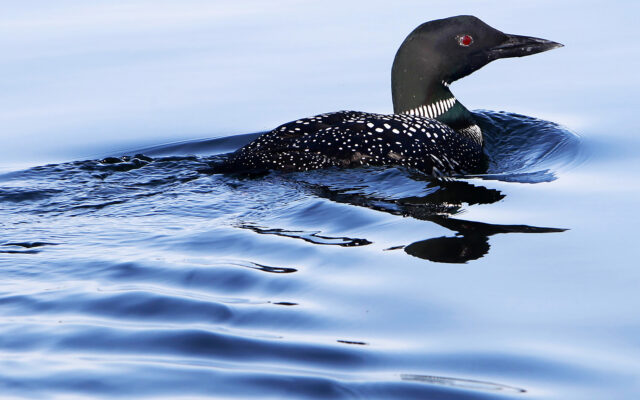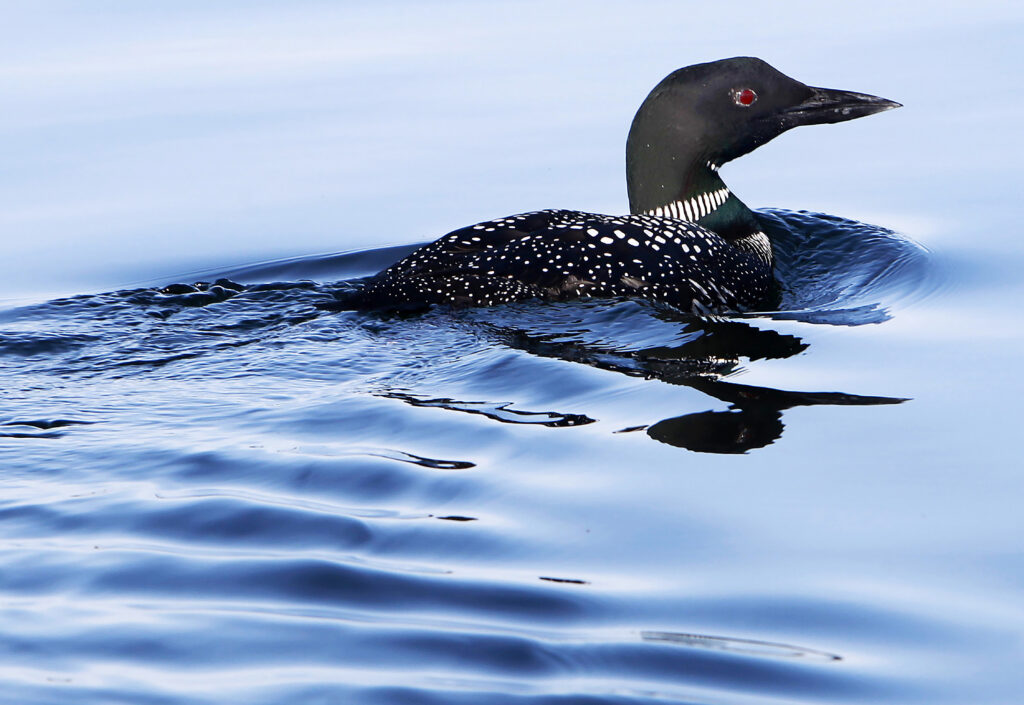
Maine loon population dips for a second year, but biologists are optimistic
By Patrick Whittle, The Associated Press
The population of a beloved Maine bird, the common loon, dipped for the second straight year, but wildlife surveyors said they are heartened by an increased number of the bird’s chicks.
Maine has the largest number of common loons in the eastern U.S., and the state is critical to the species’ breeding population. The loons are listed as endangered or threatened in some other New England states and beyond.
Maine Audubon, which conducts a loon count every year, said Dec. 4 it projects a population of 2,892 of the birds based on this year’s results. That is down slightly from a year ago and about 16 percent lower than the 2021 total.

LOON — A loon swims on Lake Winnipesaukee in Wolfeboro, New Hampshire.
However, Maine Audubon’s biologists said they aren’t worried, in part because the number of loon chicks climbed from 298 in 2022 to 411 this year. That means the future is still bright for the species, which has roughly doubled in total population since the counting began 40 years ago, Maine Audubon representatives said.
“This was a huge jump,” said Hannah Young, Maine Audubon’s loon count coordinator. “We’re hoping that this will show in six years or so when we’ll see an increase in the adults.”
Common loons are large, sturdy waterbirds with long, sharp bills that breed on lakes and ponds, frequently returning to the same water bodies year after year. They produce haunting, ghost-like calls and are a cultural icon in Canada and a favorite of birdwatchers.
This is not the first time Maine’s loon population has declined for a short period in the midst of its long-term recovery. Similar drops in population happened from 2005 to 2007 and again from 2018 to 2020, Maine Audubon data show.
Loons have been a passion of U.S. conservationists for decades, and recent efforts have focused on phasing out lead fishing tackle, which can kill them if they accidentally ingest it. This year, Maine passed a bill ending the sale and use of painted lead fishing tackle, a shift that will help the birds, Maine Audubon said. Lead poisoning has “long been one of the leading causes of death for adult loons in Maine,” the group said in a statement.
Efforts are also afoot to rebuild loon populations in other states, including Massachusetts, which only has a few dozen breeding pairs.